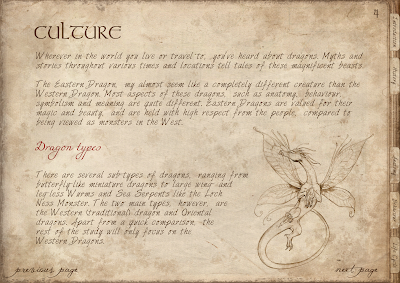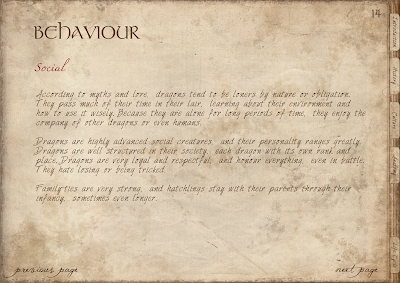The cultural and social differences aside, most dragons share a few common features, such as reptilian features and scales, wings and/or the ability to fly (many types of dragons don't actually possess wings, but can still fly), enormous strength and noxious/fire breath. The anatomy of most dragons is unexplainable and illogic, and some people have gone to great lengths to search for scientific answers to the dragons anatomical build and it's ability to fly and breathe fire. These researches claim, for example, that because of the large muscles needed for flight, the dragon would in fact not be able to run very well, as it wouldn't be built for this purpose. The wings, which in fact is another set of arms complete with five fingers, need to be connected at the far back of the dragons body to give the wing membranes a large enough surface area to keep the dragon airborne and allow it to fly horizontally. The physics of proportion, or more commonly called "Physics of Lilliput" claim that the dragons would in fact have to be fairly small creatures (1 to 10 foot) in order to be able to fly at all. If you, for example, had a perfectly proportionally functional dragon that could fly, and decided that you wanted to enlarge the dragon ten times and keep the proportions, the length of the dragon would be ten times as long, the surface area a hundred times larger and he will weight a thousand times more than before because of this. Because his wings give him the ability to fly, he will be unable to fly because of his lack of lift power in comparison to his new area/volume.
Dragons are also a very tricky creature to classify because they don't belong solely to one class of animals, but more a combination of several, or even a class of their own. They can't be reptiles, since they are warm blooded and active; they can't be mammals because they lay eggs and don't produce milk, and they can't be birds as they have scales and six members. They do possess traits of each of these classes though:
- Birds: Hollow bones (for flight), lay eggs
- Reptiles: Scaled, lay eggs
- Mammals: Four chamber heart, specialized teeth
Below are a few pages of compiled research. The research is based on the most logical and scientific explanations on how dragons could have looked and behaved had they existed. Special credits to Draconian and Dragnix for the consistent information.

















No comments:
Post a Comment